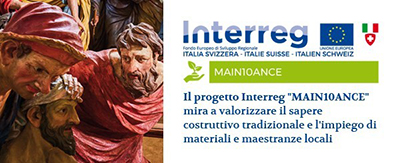
Sacro Monte of Belmonte
Overlooking the vast Turin plain and the alpine views of the Canavese, the Sacred Mount of Belmonte is the most recent of the Piedmont-area Sacred Mounts included in the UNESCO world heritage site list, created to integrate the religious offer of an ancient sanctuary dedicated to the Virgin Mary, which dates back to the early eleventh century.
It was the Franciscan friar Michelangelo da Montiglio who - once returned from the Holy Land - planned the construction of a new Way of the Cross to illustrate the Passion and death of Christ. It was to be populated by life-size statues and paintings, inspired by the successful model of the Sacred Mount of Varallo.
The first eight chapels were built in less than ten years, four more between 1759 and 1781, while construction of the last one started only in 1825. All of them were arranged internally by unknown local artists and only the name of the painter is known: Grosso di Ivrea. It was him who in the late eighteenth century decorated the chapels of Pilate, the Cyrenean, the Pious Women and the Second Fall. The realism of the characters, like the faces of the villains who carry Christ to his death, is so effective and engaging as to justify the vandalism committed until a few decades ago by those who pelted the images of the villains with stones.
The thirteen chapels are located along a circular path in a lush natural environment full of century-old oaks and chestnut trees. It is also an area full of historical finds dating back to the late Bronze Age-first Iron Age (XII-XI century BC) to the Roman and late Roman period and the Lombard period, as proven by the ruins of a fortified village unearthed between the fifth and sixth chapel.
Map

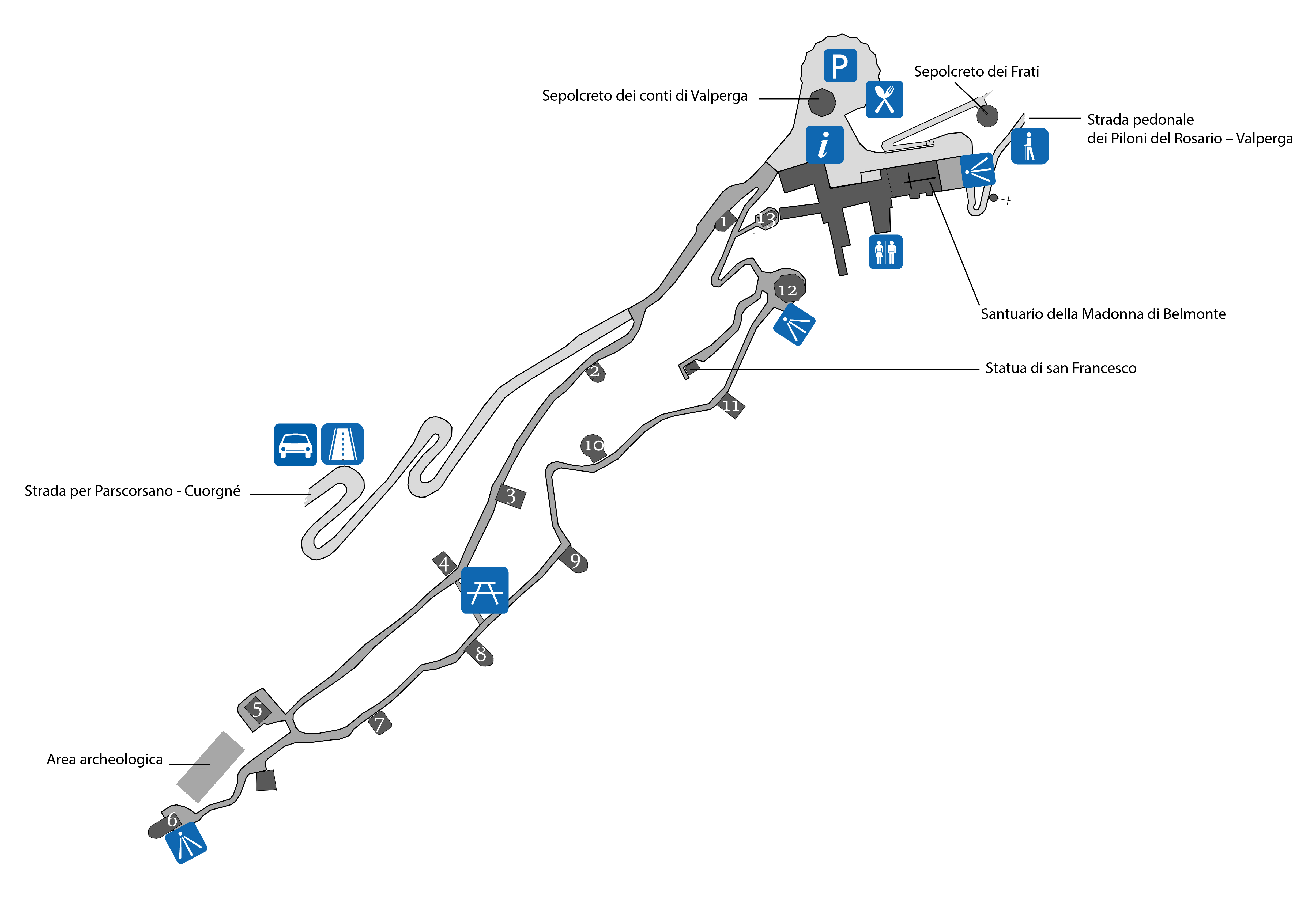
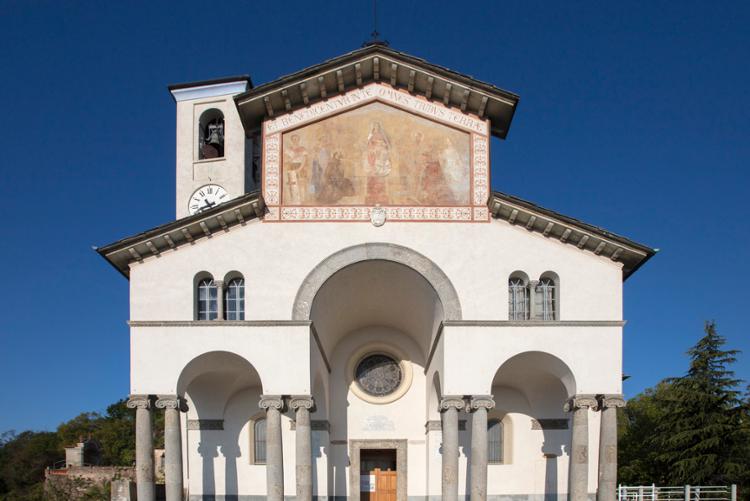
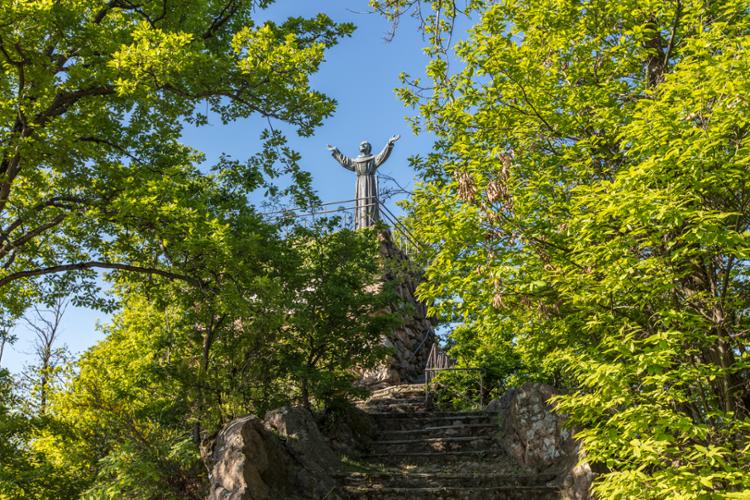
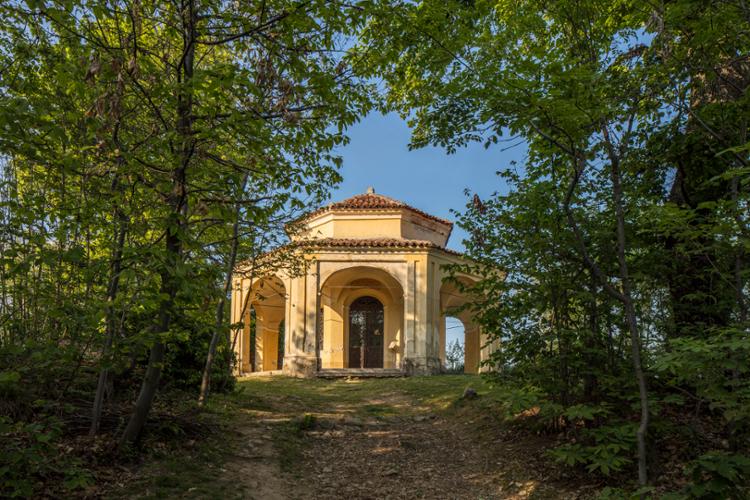
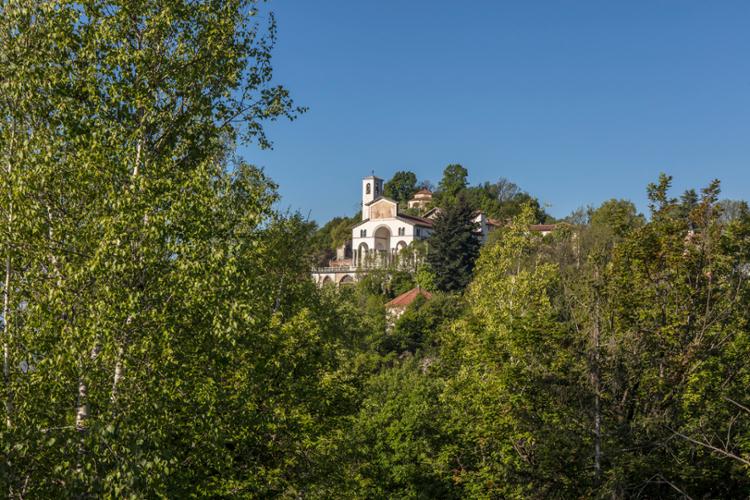







 Questo portale www.sacrimonti.org è un progetto finanziato a valere sui fondi della Legge 20 febbraio 2006, n. 77
Questo portale www.sacrimonti.org è un progetto finanziato a valere sui fondi della Legge 20 febbraio 2006, n. 77 